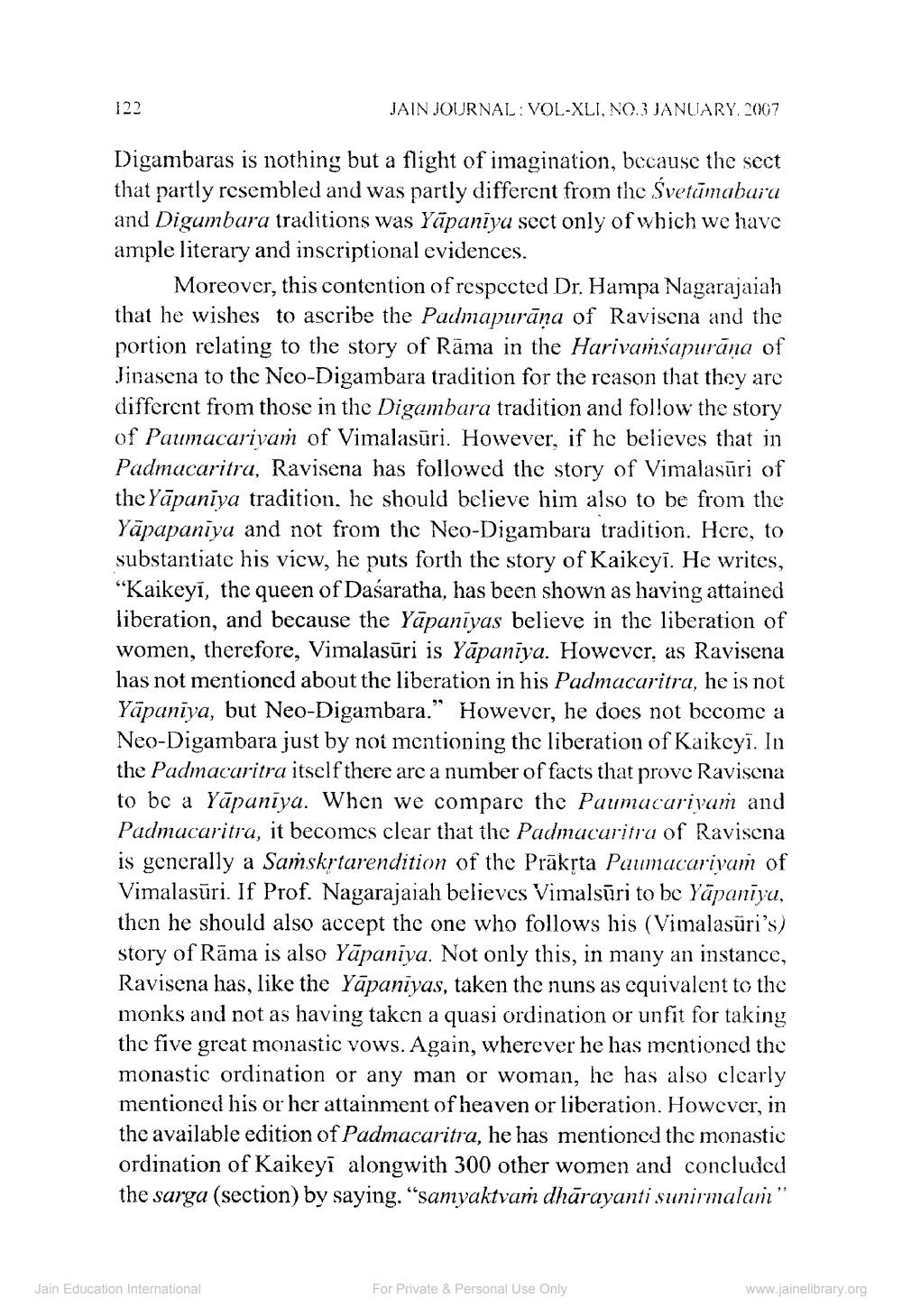Book Title: Jain Journal 2007 01 Author(s): Jain Bhawan Publication Publisher: Jain Bhawan Publication View full book textPage 9
________________ 122 JAIN JOURNAL: VOL-XLI, NO.3 JANUARY 2007 Digambaras is nothing but a flight of imagination, because the sect that partly resembled and was partly different from the Svetāmabara and Digumbara traditions was Yāpaniya sect only of which we have ample literary and inscriptional evidences Moreover, this contention of respected Dr. Hampa Nagarajaiah that he wishes to ascribe the Pudmapurāņa of Ravisena and the portion relating to the story of Rāma in the Harivamsapurāna of Jinasena to the Neo-Digambara tradition for the reason that they are different from those in the Digambara tradition and follow the story of Paumacarivam of Vimalasūri. However, if he believes that in Padmacaritra, Ravisena has followed the story of Vimalasūri of the Yāpaniya tradition, he should believe him also to be from the Yāpapaniya and not from the Neo-Digambara tradition. Here, to substantiate his vicw, he puts forth the story of Kaikeyī. He writes, “Kaikeyī, the queen of Daśaratha, has been shown as having attained liberation, and because the Yāpanīyas believe in the liberation of women, therefore, Vimalasūri is Yāpaniya. However, as Ravisena has not mentioned about the liberation in his Padmacaritra, he is not Yapanīya, but Neo-Digambara.” However, he does not become a Neo-Digambara just by not mentioning the liberation of Kaikeyi. In the Padmacaritra itself there are a number of facts that prove Ravisena to be a Yāpaniya. When we compare the Paumucuriyam and Padmacaritra, it becomes clear that the Padmucaritra of Ravisena is generally a Samskrtarendition of the Präkrta Paumucarivam of Vimalasūri. If Prof. Nagarajajah believes Vimalsūri to be Yāpaniya, then he should also accept the one who follows his (Vimalasūri’s) story of Rāma is also Yāpaniya. Not only this, in many an instance, Ravisena has, like the Yāpaniyas, taken the nuns as equivalent to the monks and not as having taken a quasi ordination or unfit for taking the five great monastic vows. Again, wherever he has mentioned the monastic ordination or any man or woman, he has also clearly mentioned his or her attainment of heaven or liberation. However, in the available edition of Padmacaritra, he has mentioned the monastic ordination of Kaikeyi alongwith 300 other women and concluded the sarga (section) by saying. “sanyaktvam dhārayanti sunirmalam" Jain Education International For Private & Personal Use Only www.jainelibrary.orgPage Navigation
1 ... 7 8 9 10 11 12 13 14 15 16 17 18 19 20 21 22 23 24 25 26 27 28 29 30 31 32 33 34 35 36 37 38 39 40 41 42 43 44 45 46 47 48 49 50 51 52 53 54
